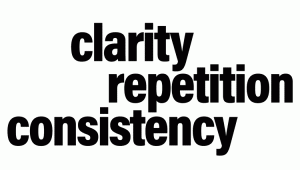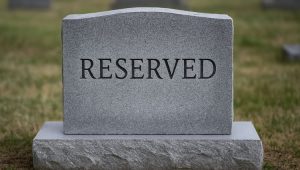It’s Good Stewardship Tote bags are nice. Coffee mugs? Cute. But what if your nonprofit could offer donors something a little more … eternal? Introducing Gift-A-Grave™ — the only planned giving incentive that says: “If you leave us in your will, we’ll save you a spot in the ground. Because lasting impact deserves a lasting address” Permanence—the sine qua non of meaningful legacy. That’s right. Join our Legacy Society, and we’ll secure your final resting place. Because nothing screams legacy quite like a shovel and a headstone. What Is Gift-A-Grave™? It’s exactly what it says. Donors commit to a planned gift, and in return, they receive: No cryptic fine print. No clickwrap legalese. Because when you want results, you skip the buzzwords and go straight to the burial. For Advancement Officers With a Shovel and a Deadline Why This Isn’t Actually the Worst Idea You’ve Heard This Year Look. we’ve mastered the art of saying absolutely nothing with maximum syllables: You’re an impact partner in our sustainability legacy circle of compassionate inclusion. Gift-A-Grave™ fixes that. It replaces fuzzy mission statements with a plot number and a timestamp. It turns “we value your support” into “we bought you real estate.” And it stops pretending that a Zoom call with the executive director is a meaningful thank-you. This is not about messaging. It’s about mortality. Why This Works (Besides the Obvious) You think it’s morbid? We think it’s motivating. It’s not about death. It’s about certainty. It’s not about guilt. It’s about recognition. And it’s definitely not about values. It’s about avoiding the phrase ‘transformative legacy experience’ ever again. Donors want clarity, not clichés. They want to be remembered—not just uploaded to your Mailchimp list. Beyond the obvious psychological triggers, the symbolic permanence of a burial site confers a gravitas that few marketing gestures can rival. PR Angle: “Local Charity Gives Donors Free Graves” Imagine the headline. Picture the LinkedIn comments. Cover on WSJ. Now picture how many legacy officers choke on their next DEI webinar thinking, “We gave away socks. These guys are giving away graves.” Even better? This campaign costs less than your last hummus tray. And let’s be honest—it’s still more meaningful than a dashboard full of glowing engagement blobs from marketing intelligence centers in our industry. Because really, what legacy donor ever said: “I’d love to support your mission… if only I had a heatmap of conversion metrics.” Of course, if they’ve been marinating in Trump rallies or DEI seminars, they may already feel immortal—so legacy isn’t really top of mind. The Personal Touch: Bring What You Love… to the Grave With Gift-A-Grave™, donors can even choose to be buried with something meaningful: Yes, we’ve made space in Section C, Row 9 for your Quarterly Will Digest™, featuring this month’s article: “How to Leave a Legacy Without Thinking, Planning, or Notifying Anyone.” Because nothing says “intentional generosity” like auto-filling your estate plan while streaming The Bachelor. Legacy Copy You Can Use Put that on a brochure and hand it out at your next gala. Watch who laughs. Hire those people. Add-Ons (If You Actually Want to Do This) But again—this is satire. Unless someone calls and says, “I want in.” In which case, start digging. Enhanced Options Because someone in development always wants tiers. And not the emotional kind. “ Premium Levels Look, someone’s going to ask about major gift recognition. They always do. So here’s what happens when you throw more money: Gift-A-Grave™ PLUS ($50K+)Call for details. Gift-A-Grave™ PLATINUM ($100K+)Call for details. The larger the donation, the larger the Toombstone. Questions We’re Tired of Answering “Can I visit my plot before I need it?”Sure. Third Thursday of every month. We serve wine. Everyone stands around making the same “I’m dying to get in” joke. It’s exactly as awkward as it sounds. “What if I live longer than expected?”Then you’ve outlived your pledge schedule, which honestly makes you better at follow-through than most capital campaigns. “Can my dog—”Yes. Whatever you were going to ask about your dog, yes. We’ve heard it all. Bring the ashes or the leash. We don’t judge. The Loyalty Program Someone in marketing said “what about referrals?” and now here we are. Eternity Points™Every time you convince someone else to join, you get points. Because apparently gamification follows us beyond the grave. 5 referrals = Fancier box 10 referrals = Better location (away from the highway) 20 referrals = We name something after you and pretend it was your idea One donor has 37 referrals. We don’t ask questions anymore. The App GraveSpace™Some 26-year-old in digital strategy insisted. Now you can: GPS to your future plot (why?) Get push notifications about deaths (WHY?) Preview your headstone in AR (seriously, why?) It has 4.2 stars and 1,100 downloads. We don’t understand anything anymore. Legal Made Us Add This This is satire unless you’re the person who keeps calling about the double plot for you and your cats. In which case, please stop calling. Plots subject to availability and our increasing discomfort with this whole situation. Side effects may include existential dread, inappropriate laughter at board meetings, and the inability to look at cemetery ads the same way ever again. I am sorry to do this but everyone in our industry has to lighten up. We are working too much. Submitted to you at 2:38 AM fully sober. If you made it this far, you either have a dark sense of humor or you’re genuinely considering this. Either way, we should probably talk. Respectfully,Viken D. Mikaelian, CEO









